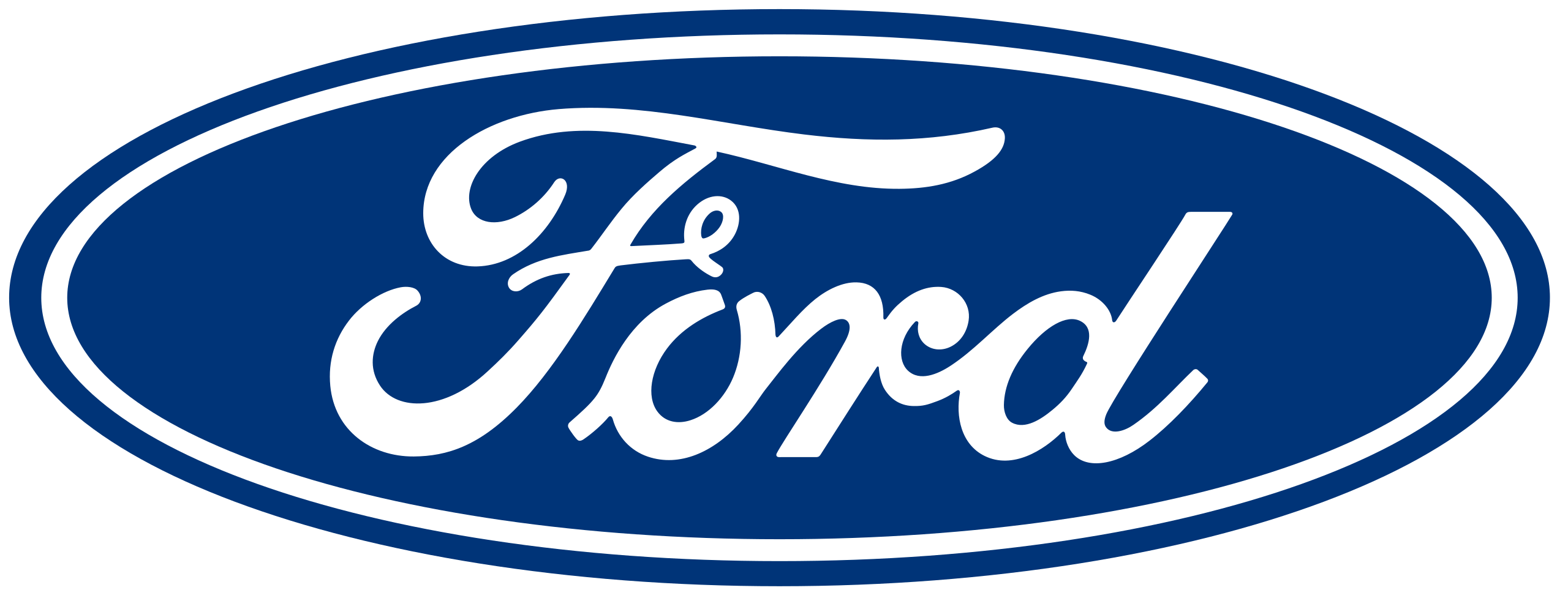2022 FORD Bronco Engine Oil and Fluids Guide
With the 2022 Ford Bronco, welcome to the world of exploration and tough capabilities. The Bronco, a genuine icon of off-road capability, carries on into the new year with the promise of an excellent driving experience that takes you to the most remote reaches of exploration. It’s important to comprehend this machine’s engine and the essential fluids that keep it operating at its best when you set out on your trips. The 2022 Ford Bronco conquers all obstacles, whether they involve climbing mountains or navigating deserts. A superior coolant is necessary to sustain ideal engine temperatures under such difficult conditions. No matter where your travels take you, the suggested coolant for your Bronco ensures that your engine will stay cool and dependable thanks to its specially engineered anti-overheating and anti-corrosion properties. In conclusion, precise engineering and a dedication to quality are the reasons behind the 2022 Ford Bronco’s remarkable performance and longevity.
ENGINE OIL
ENGINE OIL DIPSTICK OVERVIEW

- Minimum.
- Nominal.
- Maximum.
CHECKING THE ENGINE OIL LEVEL
- Make sure that your vehicle is on level ground.
- Check the oil level before starting the engine, or switch the engine off after warming up and wait 10 minutes for the oil to drain into the oil pan.
- Remove the dipstick and wipe it with a clean, lint-free cloth.
- Reinstall the dipstick and make sure it is fully seated.
- Remove the dipstick again to check the oil level.
- If the oil level is at the minimum mark, immediately add oil.
- Reinstall the dipstick. Make sure it is fully seated.
Note: If the oil level is between the maximum and minimum marks, the oil level is acceptable. Do not add oil.
Note: The oil consumption of new engines reaches its normal level after approximately 3,000 mi (5,000 km).
ADDING ENGINE OIL
WARNING: Do not remove the filler cap when the engine is running.
WARNING: Do not add engine oil when the engine is hot. Failure to follow this instruction could result in personal injury.
Do not use supplemental engine oil additives because they are unnecessary and could lead to engine damage that the vehicle warranty may not cover.
- Clean the area surrounding the engine oil filler cap before you remove it.
- Remove the engine oil filler cap.
- Add engine oil that meets our specifications. See Capacities and Specifications .
- Reinstall the engine oil filler cap. Turn it clockwise until you feel a strong resistance.
Note: Do not add oil further than the maximum mark. Oil levels above the maximum mark may cause engine damage.
Note: Immediately soak up any oil spillage with an absorbent cloth.
RESETTING THE ENGINE OIL CHANGE REMINDER
Use the information display controls on the steering wheel to reset the oil change reminder.
From the main menu scroll to:
| Message | Action and Description |
| Settings | Press the right arrow button, then from this menu scroll to the following message. |
| Convenience | Press the right arrow button, then from this menu scroll to the following message. |
| Oil Life Reset | Press the right arrow button, then from this menu scroll to the following message. |
| Hold OK to Reset | Press and hold the OK button until the instrument cluster displays the following message. Reset Successful |
| When the oil change reminder resets the instrument cluster displays 100%. Remaining Life {00}% |
|
| If the instrument cluster displays one of the following messages, repeat the process. Not Reset Reset Cancelled |
ENGINE OIL CAPACITY AND SPECIFICATION
For filling information, please refer to the Capacities and Specifications section of your owner’s manual. See Engine Oil Capacity and Specification .
CHECKING THE COOLANT
When the engine is cold, check the concentration and level of the coolant at the intervals listed in the scheduled maintenance information. See Scheduled Maintenance.
Note: Make sure that the coolant level is between the minimum and maximum marks on the coolant reservoir.
Note: Coolant expands when it is hot. The level may extend beyond the MAX mark.
If the coolant level is at or below the minimum mark, add prediluted coolant immediately.
Maintain coolant concentration within 48% to 50%, which equates to a freeze point between -29°F (-34°C) and -35°F (-37°C). Coolant concentration should be checked using a refractometer. We do not recommend the use of hydrometers or coolant test strips for measuring coolant concentration.
Adding Coolant
WARNING: Keep your hands and clothing clear of the cooling fan.
WARNING: Do not remove the coolant reservoir cap when the engine is on or the cooling system is hot. Wait 10 minutes for the cooling system to cool down. Cover the coolant reservoir cap with a thick cloth to prevent the possibility of scalding and slowly remove the cap. Failure to follow this instruction could result in personal injury.
WARNING: Do not add engine coolant when the engine is on or the cooling system is hot. Failure to follow this instruction could result in personal injury.
WARNING: Do not add coolant further than the MAX mark.
WARNING: Do not put coolant in the windshield washer reservoir. If sprayed on the windshield, coolant could make it difficult to see through the windshield.
WARNING: Do not allow the fluid to touch your skin or eyes. If this happens, rinse the affected areas immediately with plenty of water and contact your physician.
WARNING: Undiluted coolant is flammable and may ignite if spilled on a hot exhaust.
Note: Do not use stop leak pellets, cooling system sealants, or non-specified additives as they can cause damage to the engine cooling or heating systems. Resulting component damage may not be covered by the vehicle Warranty.
Note: Automotive fluids are not interchangeable.
It is very important to use prediluted coolant approved to the correct specification in order to avoid plugging the small passageways in the engine cooling system. See Capacities and Specifications (page 401). Do not mix different colors or types of coolant in your vehicle. Mixing of engine coolants or using an incorrect coolant may harm the engine or cooling system components and could void the vehicle Warranty.
Note: If prediluted coolant is not available, use the approved concentrated coolant diluting it to 50/50 with deionized or distilled water. See Capacities and Specifications . Using water that has not been deionized may contribute to deposit formation, corrosion and plugging of the small cooling system passageways.
To top up the coolant level do the following:
- Unscrew the cap slowly. Any pressure escapes as you unscrew the cap.
Add enough prediluted coolant to reach the correct level.
Note: We do not recommend the use of recycled coolant. - Replace the coolant reservoir cap. Turn the cap clockwise until it contacts the hard stop.
- Check the coolant level in the coolant reservoir the next few times you drive your vehicle. If necessary, repeat step 2.
If you have to add more than 1.1 qt (1 L) of engine coolant per month, have your vehicle checked as soon as possible. Operating an engine with a low level of coolant can result in engine overheating and possible engine damage.
In case of emergency, you can add a large amount of water without engine coolant in order to reach a vehicle service location. Service your vehicle as soon as possible.
Water alone, without engine coolant, can cause engine damage from corrosion, overheating or freezing.
Do not use the following as a coolant substitute, as they can cause engine damage from overheating or freezing:
- Alcohol.
- Methanol.
- Brine.
- Any coolant mixed with alcohol or methanol antifreeze.
Do not add extra inhibitors or additives to the coolant. These can be harmful and compromise the corrosion protection of the coolant.
FAQ
How often should I change the engine oil in my 2022 Bronco?
Ford advises adhering to the maintenance schedule included in your owner’s handbook. Oil changes are typically necessary every 7,500 to 10,000 miles, although harsh driving situations and off-road driving may call for more regular replacements.
For your Bronco, it is best to use engine oils that adhere to Ford’s standards. Utilizing recommended oils guarantees top efficiency and longevity.
Gear shifts are smooth and precise thanks to the lubrication and cooling provided by the transmission fluid. To maintain peak performance, the recommended transmission fluid must be used.
According to your owner’s manual, check your gearbox fluid on a regular basis. This often entails checking the fluid level and state throughout regular maintenance.
Yes, the 2022 Bronco is built with towing in mind. It’s crucial to follow Ford’s towing recommendations and make sure your fluids are in good condition even if the same fluids can be used for towing.
Ford advises using a certain kind of coolant that adheres to their requirements. This coolant guards against corrosion while regulating engine temperature.
Off-road excursions can be made without experiencing overheating by proper maintenance, the use of the required coolant, and routine cooling system inspections.
Yes, it’s essential to use specialist differential and transfer case fluids to ensure longevity and performance. These fluids have been designed to resist the particular requirements of off-road driving.
Sticking with a single brand of fluids is typically advised to ensure compatibility and performance. Mixing liquids from several brands could have negative consequences.
For further instructions on how to check the oil level, consult your owner’s handbook. Typically, it entails parking on flat ground, allowing the engine to cool, and checking the oil level using the dipstick.
If you notice a fluid leak, it’s crucial to fix it right away. For help determining the type of fluid, consult your owner’s manual, then get in touch with a licensed technician for an examination and repairs.
While some owners would prefer to change their own oil, others might choose to use a licensed repair provider to make sure spent oil is disposed of properly and manufacturer guidelines are follower.
Using high-quality fluids guarantees optimum performance, prolonged engine life, improved fuel efficiency, and dependable performance under difficult driving circumstances.
You can consult your owner’s manual or get more particular information regarding fluid requirements by getting in touch with a Ford dealership or authorized service facility. They can advise you on the proper fluids for your particular Bronco model and driving requirements.
Useful Link
View Full Manual: 2022 FORD Bronco | Auto User Guide
Download Manual: Ford Vehicle Owner Manuals | Ford


